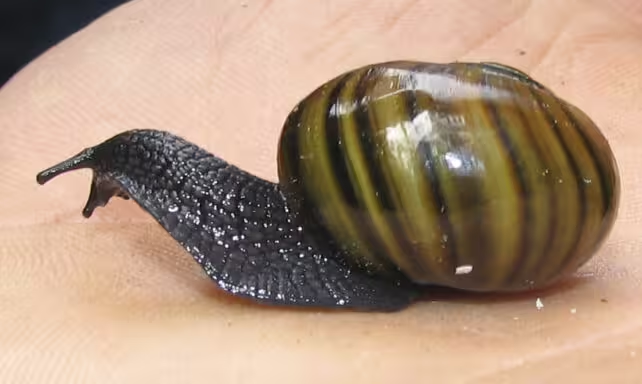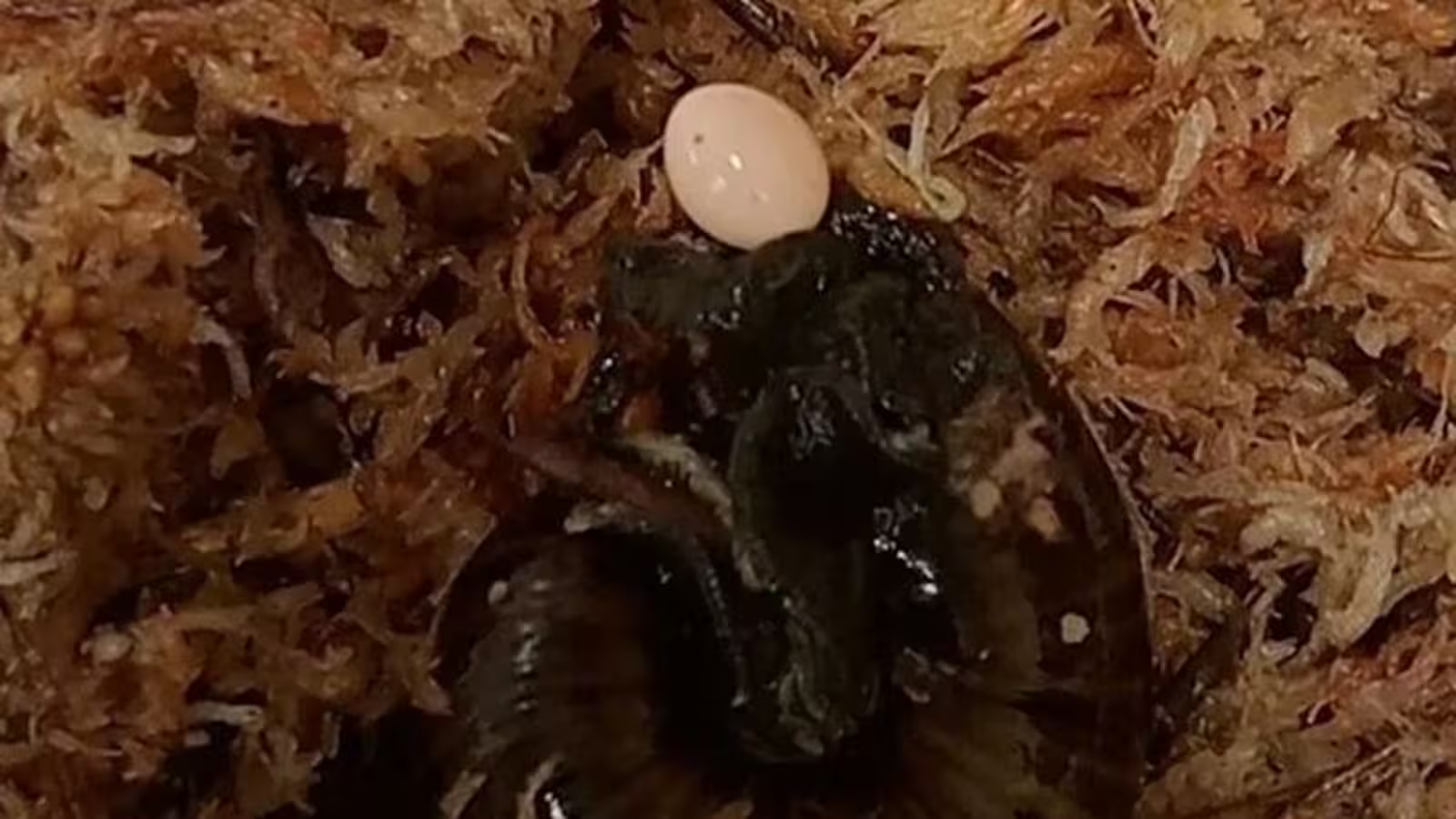3 Minutes
The Mount Augustus Snail: A Unique Giant of New Zealand
Meet the Mount Augustus giant land snail, scientifically known as Powelliphanta augusta, a carnivorous gastropod native to New Zealand’s isolated ecosystems. Unlike most snails, this remarkable species has attracted global scientific attention not only due to its impressive size—reaching lengths of up to 10 centimeters—but also for its highly unusual method of reproduction.
Unusual Reproduction Captured on Film
Recently, for the first time, scientists captured rare footage of a Mount Augustus snail laying an egg through a special pore just below its head—a reproductive process unseen in this species until now. Lisa Flanagan, a ranger from New Zealand’s Department of Conservation (DOC), has overseen the care of a captive colony of these snails since 2006. During a routine health inspection and weighing of the snails, Flanagan and her team witnessed an egg approximately 5 millimeters in diameter beginning to emerge from the snail's neck, providing invaluable insight into the species’ reproduction.
“It’s fascinating that after all these years of caring for Powelliphanta snails, this is the first time we’ve directly observed the egg-laying process,” Flanagan explained. P. augusta typically lays around five eggs each year, but such direct evidence of the event had remained elusive until now.
Ecological Role and Conservation Challenges
Powelliphanta snails are among the largest terrestrial snails globally, with a diet that primarily consists of earthworms—a behavior vital for maintaining forest and grassland soil health in New Zealand. These slow-moving predators were only formally described in 2005 when mining activity threatened much of their native habitat. Today, wild populations exist only in a handful of relocated sites, while approximately 2,000 individuals live in captive colonies to preserve genetic diversity and safeguard the species against extinction.
“These snails are extraordinarily long-lived,” notes Flanagan. “Some individuals in captivity are now between 25 and 30 years old. Monitoring how their shells grow and observing their natural behaviors continues to offer intriguing scientific insights.”

Hermaphroditism and the Wonder of Gastropod Reproduction
One of the most fascinating biological features of Powelliphanta augusta is its hermaphroditic nature; every individual possesses both male and female reproductive organs. Mating involves an elaborate exchange, wherein each snail extends a specialized organ (a penis) from the same neck pore used for egg-laying, exchanging sperm with its partner. Sperm is then stored for later fertilization, and ultimately, fertilized eggs are laid through the very same opening.
The direct observation of this egg-laying mechanism not only enriches our understanding of gastropod biology but also underscores the importance of in-depth conservation efforts for rare and threatened species.
Conclusion
The Powelliphanta augusta snail’s remarkable reproductive strategy—laying eggs through a neck pore—highlights the diversity and complexity of life in New Zealand’s unique environments. Ongoing research and conservation initiatives are crucial for protecting this endangered species, while continued observation promises to reveal even more astonishing aspects of gastropod biology. Such discoveries deepen scientific appreciation for evolutionary innovation and emphasize the urgent need for ecological preservation.


Comments